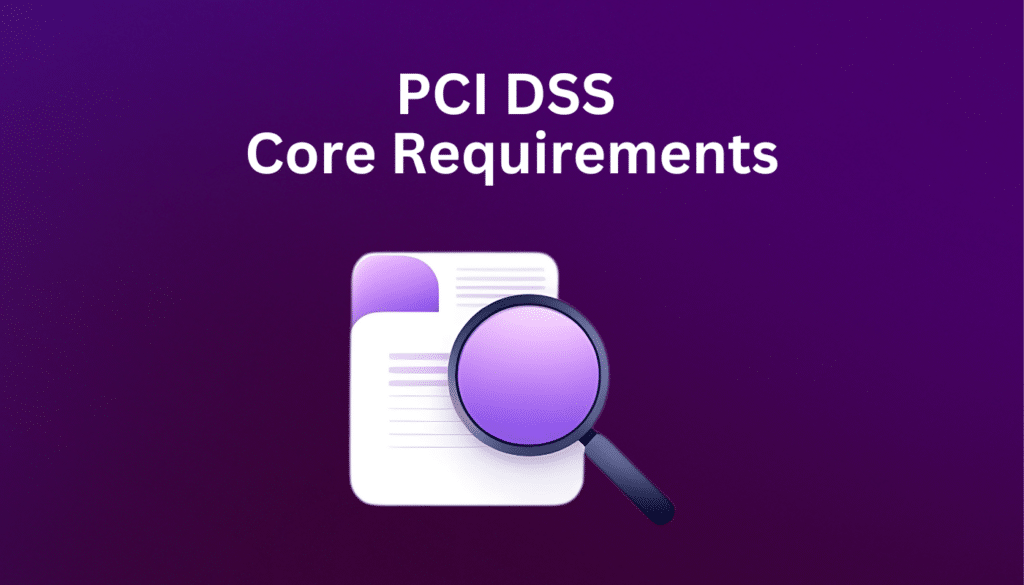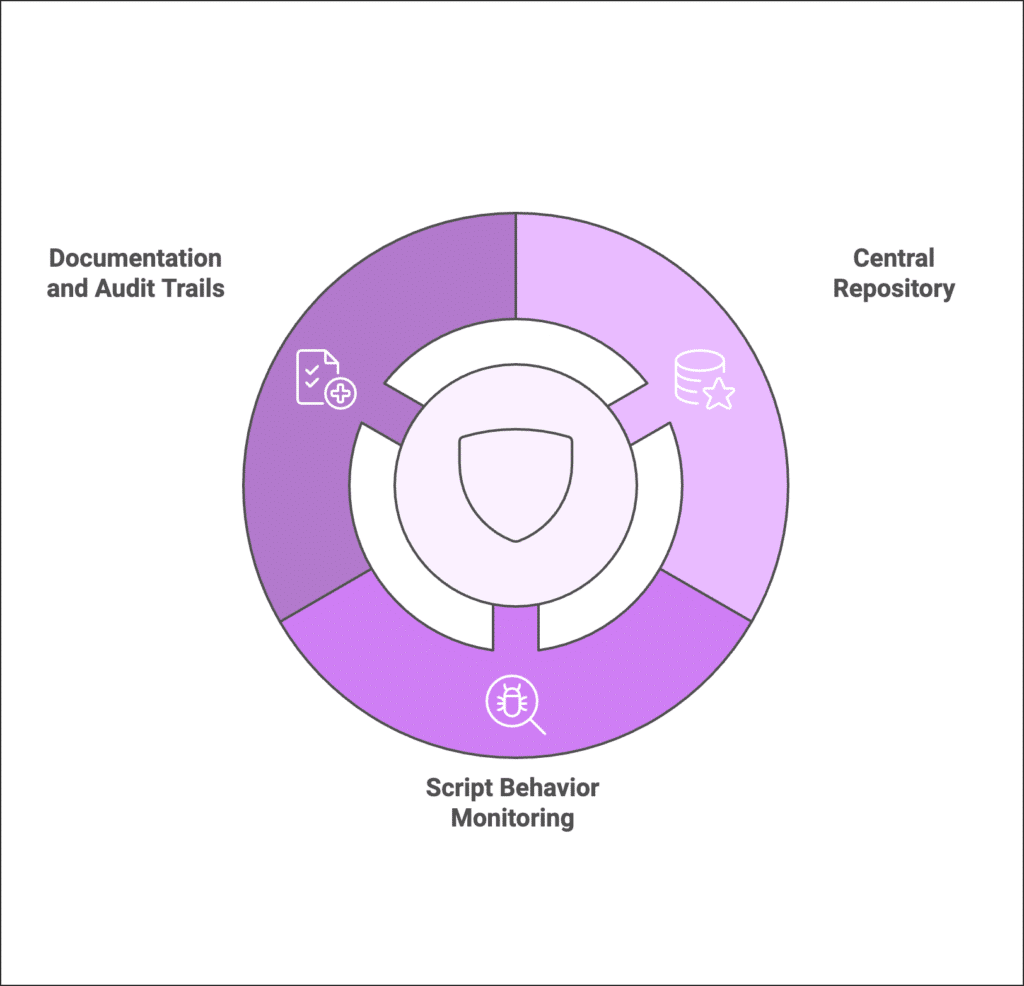PCI DSS 4 Compliance requires a clear understanding of the latest requirements, particularly Requirement 6.4.3 and 11.6.1, which emphasize the importance of JavaScript monitoring for maintaining secure payment environments. For AppSec, Infosec, or ISA/QSA professionals, staying on top of PCI DSS 4.0.1 can feel overwhelming, but protecting payment card data leaves no room for errors. This guide breaks down what Requirements 6.4.3 and 11.6.1 entail, how to effectively address them, and strategies to keep your ROC airtight and audit-ready.
Understanding the Core PCI DSS 4 Requirements

Requirement 6.4.3: What It Means
PCI DSS 4.0.1 Requirement 6.4.3 zeroes in on maintaining a clear handle on any changes to your web environment—especially scripts running on payment pages. At a high level, it demands that all externally hosted JavaScript (or third-party scripts) are inventoried, monitored, and controlled to prevent malicious tampering.
Key Takeaways for 6.4.3
- You need a formal process for identifying all scripts and ensuring each one is authorized.
- Constantly verify the integrity of these scripts to avoid introducing vulnerabilities.
- Keep an eye on any script changes (like version updates or new script additions) so you can act quickly if something unexpected happens.
Requirement 11.6.1: Why It’s Critical
Requirement 11.6.1 builds on the idea of continuous monitoring by focusing on how you detect unauthorized changes to critical web pages and scripts in real time. It’s all about quickly catching (and blocking) suspicious activities.
Key Takeaways for 11.6.1
- Implement technical controls that monitor for tampered or unapproved scripts.
- Set up alerts or notifications so your security team knows right away if scripts behave oddly.
- Document how you investigate and respond to these alerts to prove compliance.
Key Compliance Checkpoints and Deadlines
When it comes to staying compliant, timing is everything. Make sure you’re up to date on PCI DSS 4.0’s official deadlines. That typically means:
- Updating your policies and procedures now to align with the new requirements.
- Completing any system or tool upgrades as soon as possible (or by any mandated deadlines).
- Training your teams on new processes to ensure they know exactly what to do when a script is changed or flagged.
Essential Components for Full Compliance

JavaScript Inventory Management
Having a solid JavaScript inventory management system is the cornerstone of meeting 6.4.3. If you can’t see all the scripts you’re running, you can’t properly secure them. My approach is to create a central repository (or use a trusted third-party tool) that automatically tracks:
- Script names and versions
- Script source/host
- Pages on which these scripts run
This way, whenever a script gets updated or replaced, it gets logged and tracked in real time.
Script Behavior Monitoring
For Requirement 11.6.1, monitoring goes beyond just cataloging your scripts—it’s about ensuring they’re behaving the way you expect. A dedicated script monitoring solution can help you:
- Set baseline behavior metrics (like network calls, DOM changes, or data capture).
- Alert on deviations from this baseline.
- Integrate with your SIEM (Security Information and Event Management) system for centralized visibility.
Documentation and Audit Trails
No matter how much I automate, I always make sure there’s a human-readable paper trail. Well-organized documentation is often your best friend during audits. Make sure you:
- Keep records of all authorized scripts and any changes.
- Document your incident response process for suspicious script activity.
- Regularly review (and update) your documentation as your environment evolves.
Schedule a Demo
Meet the PCI DSS 4.0.1 March 2025 Deadline. Future-proof and automate your website compliance and security today!
Ensure your web application aligns with the latest PCI DSS requirements to protect payment data and avoid costly fines. No payment information required.
Compliance Validation and Reporting
Required Report Types and Frequencies
To prove compliance, you’ll need to generate certain reports on a scheduled basis—often quarterly or annually, depending on the nature of your business. These might include:
- Change Management Reports: Showcasing when and why scripts were updated or replaced.
- Incident Response Logs: Summaries of any alerts, investigations, and resolutions.
- Inventory Reports: Listing of all active and inactive scripts across your sites.
Documentation Requirements for Audits
Auditors often ask for evidence that you’re consistently following your documented processes. Personally, I find it helpful to store all relevant artifacts—like policy docs, inventory spreadsheets, and monitoring logs—centrally. That makes it easier to produce evidence quickly when the auditors come knocking.
Evidence Collection and Retention Strategies
Compliance is never a one-and-done exercise. You’ll need to retain records for a set period (often up to a year or more), so plan ahead. Think about:
- Cloud Storage: Ensuring backup and redundancy.
- Tagging/Labeling: Making it easier to retrieve logs during an audit.
- Automated Retention Policies: Automatically archiving older records to keep storage manageable.
Wrapping Up
Meeting PCI DSS 4.0 Requirements 6.4.3 and 11.6.1 is all about visibility and control. With a solid JavaScript inventory, robust script behavior monitoring, and thorough documentation, you’ll be well-positioned to fend off threats—and prove that you’re doing so. As with anything in the compliance world, the best time to start is now. So take it step by step, lock down those scripts, and show auditors you’re serious about protecting cardholder data.